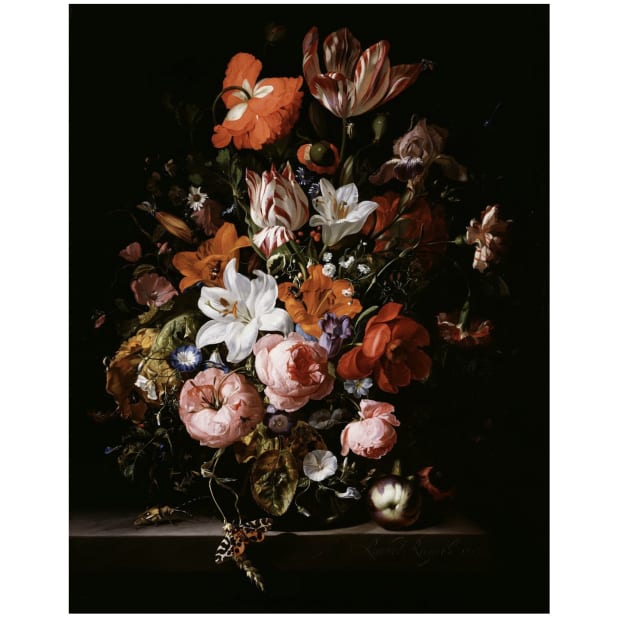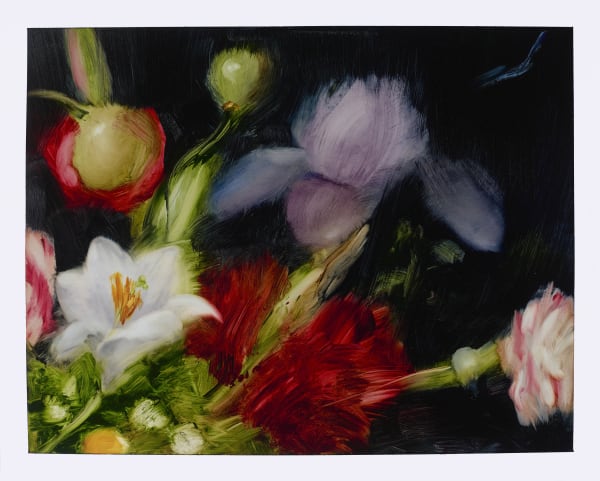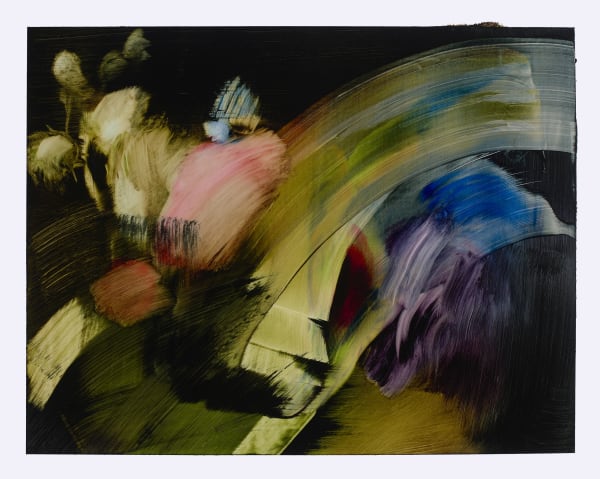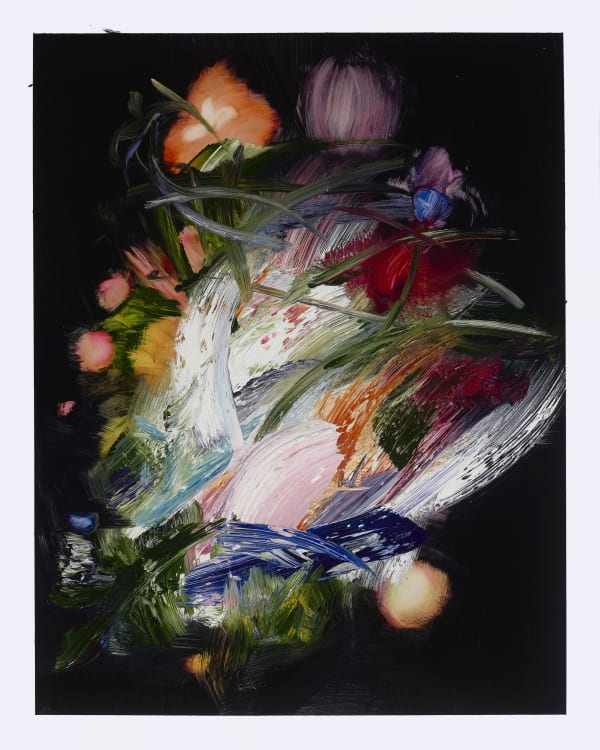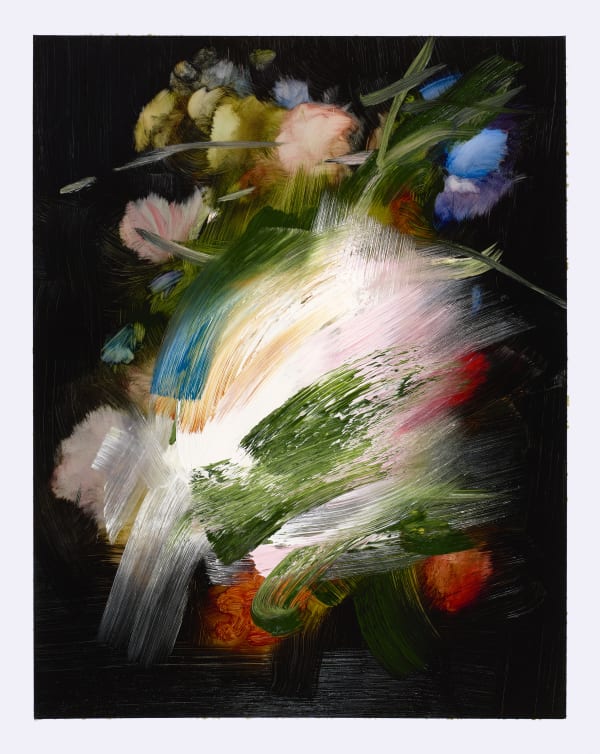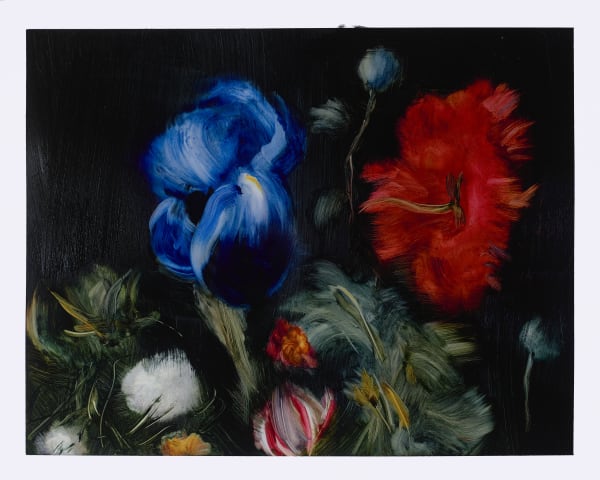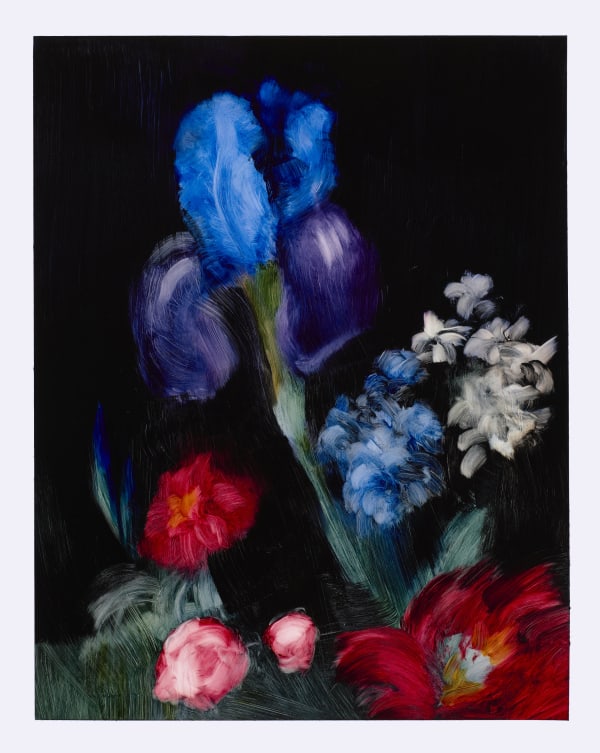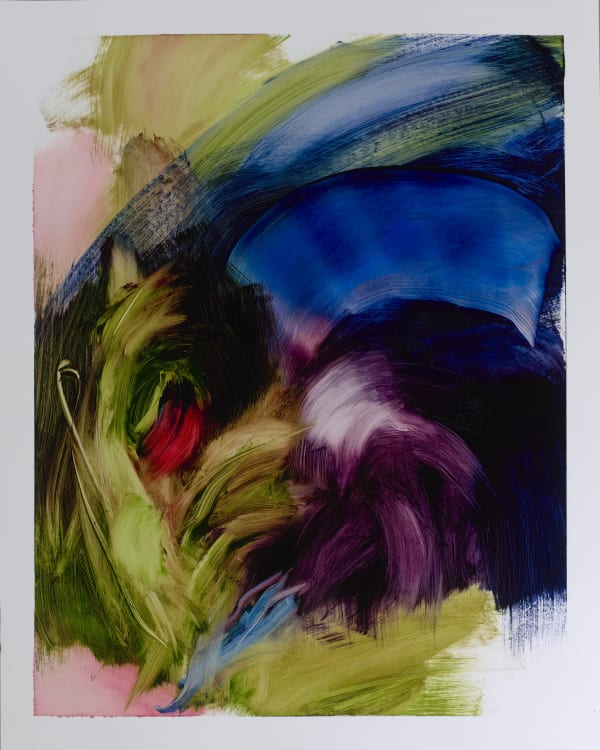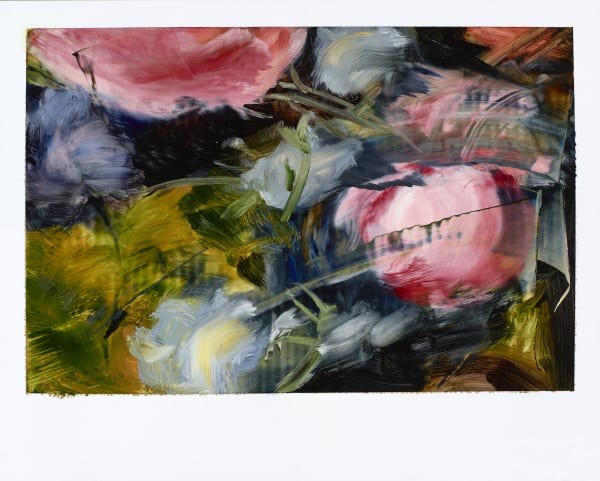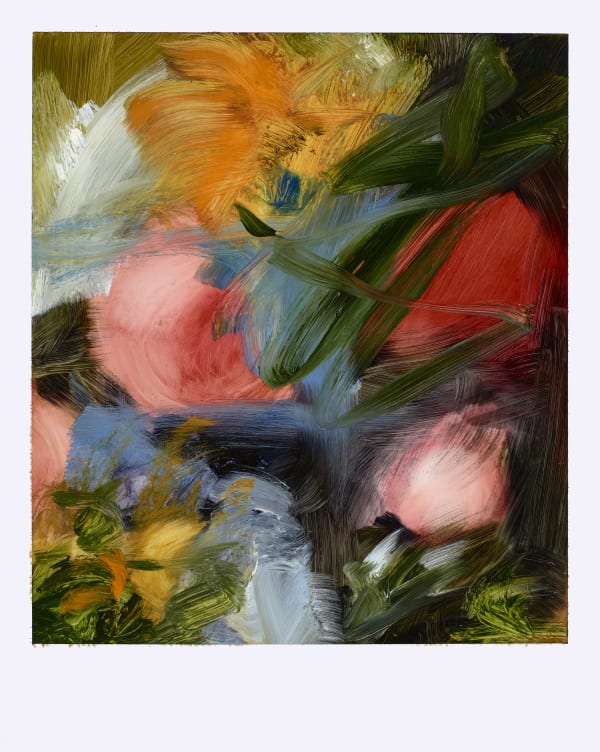-
-

Rachel Ruysch
Flowers in a Glass Vase, 1704
in the collection of the Detroit Institute of Arts
-
The encounter with Ruysch’s Flowers in a Glass Vase led to the creation of a number of oil studies on paper. In conversation with Carol Corey, Ansel and Corey realized this body of work could be expanded into a suite of works on paper that could be the focus of their own exhibition, and that this would be a wonderful show with which to launch Corey’s new venture in Kent, Connecticut. This allowed for further exploration and experimentation. Ansel began to examine other paintings by Ruysch as well as paintings by Willem Van Aelst, to whom Ruysch was apprenticed in 1679, at age fifteen, until his death in 1683. Ansel commenced examining the relevance of Dutch still lifes to the current moment: delving into details within details; cropping, rearranging and collaging; zooming in, pinching out; allowing the visual density of the source to reveal itself on deeper scrutiny.
-

oil study VI for Ruysch Flower Details, 2019
oil on paper, 12 x 18 in. (image)
-
Works from the exhibition
-
 Elise Ansel, Iris and Poppies II, 2020 Sold
Elise Ansel, Iris and Poppies II, 2020 Sold -
 Elise Ansel, Iris and Poppies III, 2020 Sold
Elise Ansel, Iris and Poppies III, 2020 Sold -
 Elise Ansel, Iris and Poppies IV, 2020
Elise Ansel, Iris and Poppies IV, 2020 -
 Elise Ansel, Incandescent I, 2020 Sold
Elise Ansel, Incandescent I, 2020 Sold
-
 Elise Ansel, Incandescent III, 2020 Sold
Elise Ansel, Incandescent III, 2020 Sold -
 Elise Ansel, Incandescent IV, 2020
Elise Ansel, Incandescent IV, 2020 -
 Elise Ansel, Incandescent V, 2020
Elise Ansel, Incandescent V, 2020 -
 Elise Ansel, Iris and Poppies VIII, 2020 Sold
Elise Ansel, Iris and Poppies VIII, 2020 Sold
-
-
VIDEO
Elise Ansel discusses her work from the Flower of the Mountain series and talks about her process of making works on paper.
Elise Ansel: Flower of the Mountain
Past viewing_room

